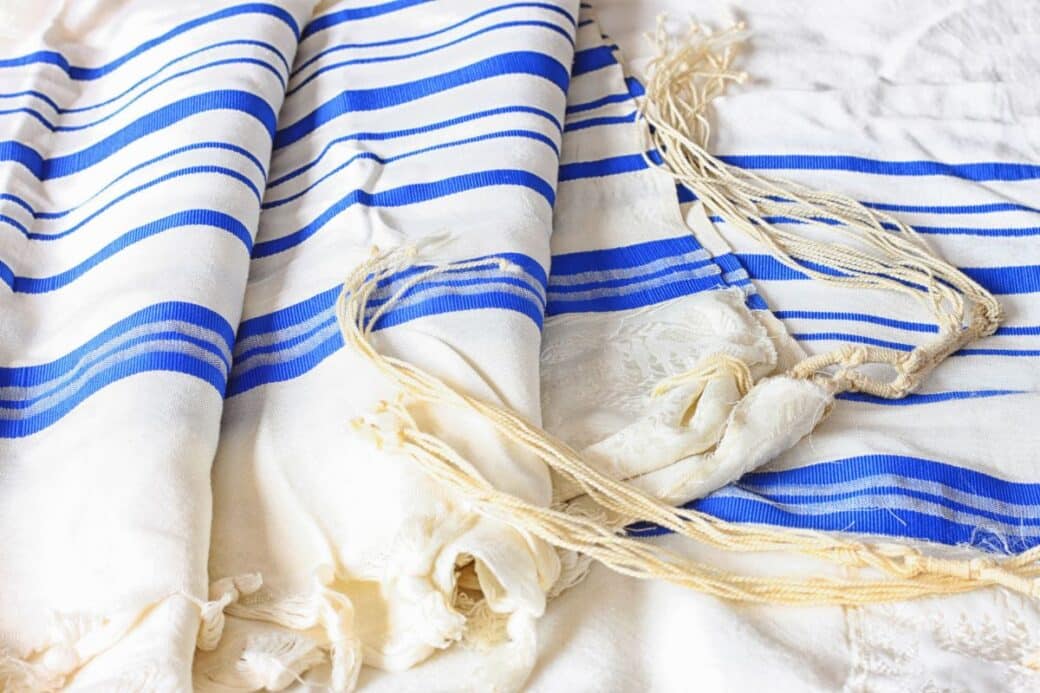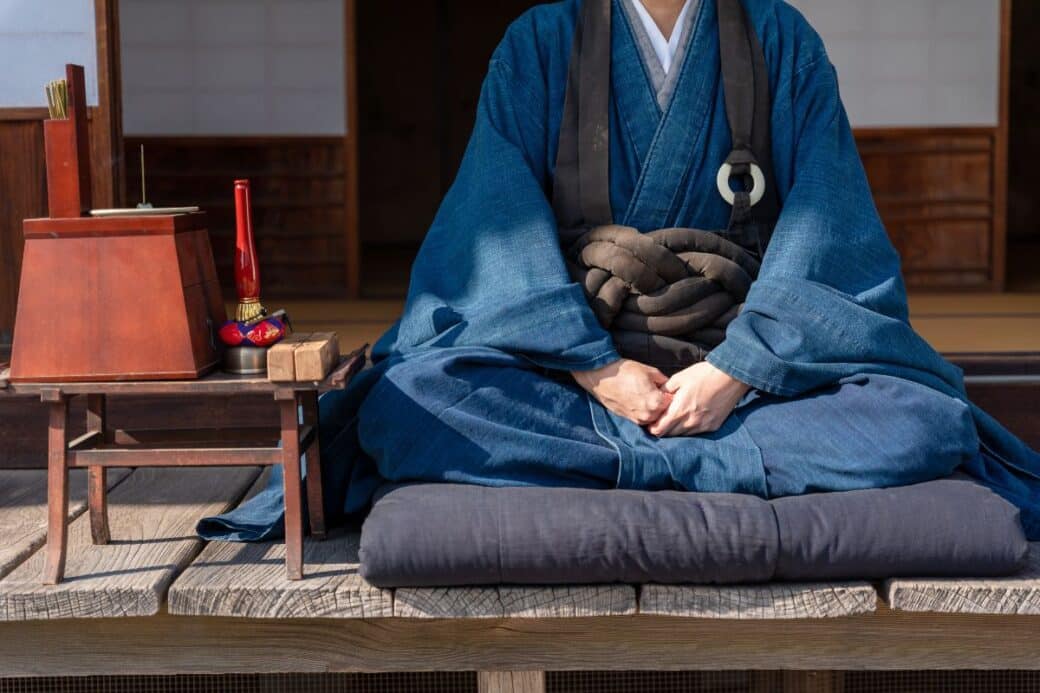Step into the world of symbolism as you uncover the hidden meanings behind a common religious article – the prayer shawl. Adorned with intricate patterns and woven with deep significance, the prayer shawl holds a sacred place in many spiritual traditions. From Judaism to Christianity, Islam to Sikhism, this humble garment carries a profound message of faith, connection, and protection. Journey with us as we unravel the layers of symbolism delicately woven within the threads of the prayer shawl, revealing its true essence and inviting you into a world of spiritual significance.

What Does A Prayer Shawl Symbolize: The Origins of Prayer Shawls
Prayer shawls have a rich and diverse history that spans across various cultures and religions. They have been used for centuries as a symbol of faith, devotion, and connection to the divine. Understanding the origins of prayer shawls allows us to appreciate their significance and sacredness in different religious traditions.
Historical Emergence of the Prayer Shawl
The practice of wearing prayer shawls can be traced back to ancient times. In many cultures, individuals would drape themselves with a shawl or a similar garment during prayer or meditation to create a sense of reverence and separation from the mundane world. The use of prayer shawls emerged independently across different regions and religions, demonstrating the universal human desire for spiritual connection.
Cultural Variations of the Prayer Shawl
While the concept of a prayer shawl is present in various cultural and religious traditions, the specific designs, symbolism, and rituals associated with them can vary significantly. Each culture infuses its own unique elements into the prayer shawl, making it a reflection of their history, beliefs, and values. From the intricately woven patterns of the Jewish tallit to the vibrant colors of shawls in Eastern religions, prayer shawls encapsulate a wide range of cultural diversity.
Jewish Tradition and the Tallit
Within Jewish tradition, the prayer shawl, known as the tallit, holds great significance. It is a tangible representation of an individual’s commitment to their faith and a reminder of their connection to God.
The Specifics of the Jewish Prayer Shawl
The tallit is a rectangular garment, typically made from wool or a blend of natural fibers. It features fringes, known as tzitzit, attached to the four corners in accordance with Jewish law. These tzitzit serve as a visual reminder of the commandments and the wearer’s obligations to live a righteous life. The tallit is typically white and may also include stripes, known as atarot, which hold spiritual symbolism within Judaism.
The Ritualistic Importance of the Tallit
In Jewish prayer services, the tallit is worn during specific occasions, such as morning prayers and holidays. It is draped over the shoulders, creating a physical and symbolic embrace, symbolizing the presence of God’s protection and guidance. The act of placing the tallit over one’s head during certain prayers further signifies humility and a desire to immerse oneself fully in the spiritual experience.

Christian Interpretation of the Prayer Shawl
While the use of prayer shawls is more commonly associated with Jewish and Eastern religious traditions, there are also Christian interpretations and practices that incorporate these sacred garments.
Old Testament References
Within the Old Testament of the Bible, there are instances where shawls or similar garments are mentioned in a religious context. For example, in the book of Numbers, Moses is instructed to create tassels on the corners of the Israelites’ garments as a reminder of their obligation to follow God’s commandments. This connection to the use of fabric as a symbol of faith carries over into Christian interpretation of prayer shawls.
New Testament Significance
In the New Testament, the act of touching the hem of Jesus’ garment is described as a source of healing and divine power. This belief in the spiritual efficacy of garments carries over into Christian practices, where prayer shawls are seen as a physical expression of faith and a conduit for divine intervention.
Modern Christian Use
In modern Christian communities, prayer shawls are often used as a means of providing comfort, solace, and support to those in need. They are frequently handmade by individuals or groups within the church and then gifted to individuals facing illness, loss, or other life challenges. These shawls represent the collective prayers and love of the community, providing a tangible reminder of the power of prayer and the presence of God’s love.
Islamic Use of Prayer Shawls
In Islamic tradition, prayer shawls play a significant role in the practice of Salah, the Islamic ritual prayer. These garments, known as prayer rugs or prayer mats, serve as a physical space for believers to commune with Allah.
Distinctive Practices in Islamic Tradition
Islamic prayer shawls, typically referred to as prayer rugs or mats, vary in design and materials used based on regional and cultural influences. They often feature intricate geometric patterns or symbols that hold deeper spiritual meanings within Islamic culture. Prayer rugs or mats are portable and easily transportable to enable Muslims to engage in prayer no matter where they are.
The Significance of the Prayer Shawl in Muslim Rituals
Muslims perform Salah five times a day, facing towards Mecca. Prayer shawls, in the form of rugs or mats, create a sacred space and serve as a physical representation of the connection between the worshipper and Allah. By unfurling these prayer shawls and positioning themselves upon them, Muslims create a sense of focus, reverence, and separation from the world during their prayer.
Prayer Shawls in Eastern Religions
Prayer shawls also hold significant meaning in Eastern religions, such as Buddhism, Hinduism, and Sikhism. Through symbolism and intricate designs, these shawls serve as tools for facilitating spiritual connection and self-reflection.
Buddhism and the Shawl
In Buddhist tradition, monks and practitioners often use shawls during meditation and ritual practices. These shawls, known as zens, provide a layer of comfort and protection during extended periods of sitting and also symbolize the spiritual journey towards enlightenment. The color and quality of the shawl can vary depending on the practitioner’s level of training and commitment to their practice.
Hinduism and the Prayer Shawl
In Hinduism, prayer shawls, known as uttariyas or chaddars, are commonly used during religious ceremonies and rituals. They are often made of sacred fabrics, such as silk, and adorned with intricate embroidery or decorative patterns. These shawls serve as a mark of respect, devotion, and commitment to the deities being honored.
Sikhism and the Use of Shawls in Prayer
Within Sikhism, a religion originating in the Indian subcontinent, shawls play a vital role in the prayer practice of covering the head. Wearing a shawl, known as a rumala, while reciting the sacred texts and prayers is a sign of reverence, modesty, and respect for the divine wisdom contained within these teachings. The shawl becomes a physical and symbolic representation of the Guru’s teachings enveloping the Sikh in spiritual guidance and protection.
Symbolic Colors in Prayer Shawls
Colors hold immense symbolic significance in prayer shawls, reflecting and conveying deeper meanings within religious contexts. The careful choice and arrangement of colors in these sacred garments amplify their spiritual and ritualistic value.
The Importance of Color in Shawls
Colors have the power to evoke emotions, set the tone, and convey profound symbolism. Each color within a prayer shawl carries its own unique significance, representing aspects such as purity, wisdom, strength, divinity, and more. The deliberate selection of colors within prayer shawls allows individuals to align themselves with these symbolic qualities during prayer and meditation.
Interpretation of Specific Colors
The interpretation of colors in prayer shawls can vary across different religious traditions. For instance, in Judaism, white is often associated with purity and divine light, while blue represents the heavenly realm and the presence of God. In contrast, within Hinduism, saffron is commonly used in prayer shawls and symbolizes the quest for spiritual enlightenment.
Physical Design and Symbolism
Apart from colors, the physical design elements of prayer shawls also hold deep symbolic meaning. The materials used, crafting techniques employed, and the overall composition of the shawls contribute to their spiritual significance.
Material and Crafting of Prayer Shawls
The material used in crafting prayer shawls often reflects the natural world and connects the wearer to the divine creation. For example, in the Jewish tradition, wool is frequently used in the tallit, symbolizing warmth, comfort, and connection to God. In Eastern religions, shawls may be made from silk or other natural fabrics, evoking a sense of elegance, purity, and spiritual refinement.
Symbolism in Design Elements
Design elements such as patterns, fringes, and embroidery often hold specific spiritual significance in prayer shawls. For instance, the patterned designs in Islamic prayer rugs often feature geometric shapes representing the order and harmony of the universe. Fringes, like those found on Jewish tallits, may signify the commandments or act as a tactile reminder of one’s spiritual obligations. These design elements serve as visual cues for the wearer, aiding in creating a sacred and spiritually attuned ambiance.
The Prayer Shawl as a Sacred Space
Prayer shawls go beyond being mere garments; they create a sacred space for individuals to connect with the divine and cultivate a deeper sense of spirituality.
Creating an Individual Sanctuary
When a person wraps themselves in a prayer shawl, they transform the physical act into a powerful symbolic gesture. The shawl becomes a personal sanctuary, providing a sense of comfort, security, and spiritual alignment. Within the sacred space of the prayer shawl, individuals can let go of distractions and immerse themselves in communion with the divine.
Encouraging Personal Connection to the Divine
Prayer shawls serve as a reminder to individuals that they carry their sacred connection to the divine within themselves. By enveloping themselves in the shawl, individuals are encouraged to focus their thoughts, intentions, and prayers towards a higher power. The physical act of donning a prayer shawl can help individuals feel more present and connected to their spirituality.
Personal and Communal Significance
Prayer shawls hold both personal and communal significance within religious and spiritual practices. They can deepen one’s personal connection to the divine while also fostering a sense of community and shared faith.
The Role of the Shawl in Personal Prayer
As individuals engage in personal prayer or meditation, the prayer shawl acts as a channel for spiritual energy and intention. It serves as a physical extension of the individual’s faith, enveloping them in a cocoon of sacredness and guiding their thoughts and prayers towards the divine. The shawl becomes a personal sanctuary, aiding in creating a focused and reverent atmosphere for individual spiritual practice.
The Prayer Shawl in Group Worship
In communal worship settings, prayer shawls bring individuals together in a shared experience of faith and devotion. They become symbols of unity and collective identity, strengthening the bonds between worshippers as they come together to celebrate and honor their spiritual traditions. Prayer shawls serve as a visual representation of the shared values and beliefs that bind a community together.
Community and Connection in Shared Ceremonies
Prayer shawls play a significant role in shared ceremonies, such as weddings, funerals, and other rituals. As individuals gather to mark important life moments, the presence of prayer shawls enhances the spiritual essence of these events. They provide a sense of continuity, tradition, and connection to something greater than oneself, amplifying the power and significance of these communal rituals.
Ceremonial Use of Prayer Shawls
Prayer shawls have become an integral part of various ceremonial practices, emphasizing their importance in key life events and transitions.
Rites of Passage Involving Prayer Shawls
Throughout life’s journey, prayer shawls are often incorporated into rites of passage. In many religious traditions, prayer shawls are used during significant moments such as birth, bar/bat mitzvahs, and weddings. These shawls serve as symbolic markers, signifying the transition from one stage of life to another and the individual’s readiness to take on new responsibilities and roles within their community.
Symbolic Use in Weddings, Funerals, and Other Rituals
Prayer shawls hold particular significance in weddings, funerals, and other religious rituals. In weddings, prayer shawls may be draped over the couple, symbolizing their shared spiritual journey and their commitment to supporting one another in their faith. During funerals, prayer shawls offer solace and comfort to the bereaved, representing the collective prayers and support of the community. These shawls infuse these vital life events with deeper spiritual meaning and a profound sense of connection to the divine.
In conclusion, prayer shawls transcend their physical form, becoming powerful symbols of faith, devotion, and connection to the divine. Whether in Judaism, Christianity, Islam, or Eastern religions, prayer shawls serve as gateways to spiritual realms and tools for establishing sacred spaces. Their rich history, cultural variations, use of colors and designs, and their ceremonial significance all contribute to their profound role in the expression of religious and spiritual beliefs. By donning a prayer shawl, individuals not only embark on a personal journey of spiritual connection but also join a larger community of believers united in their pursuit of divine presence and guidance.




